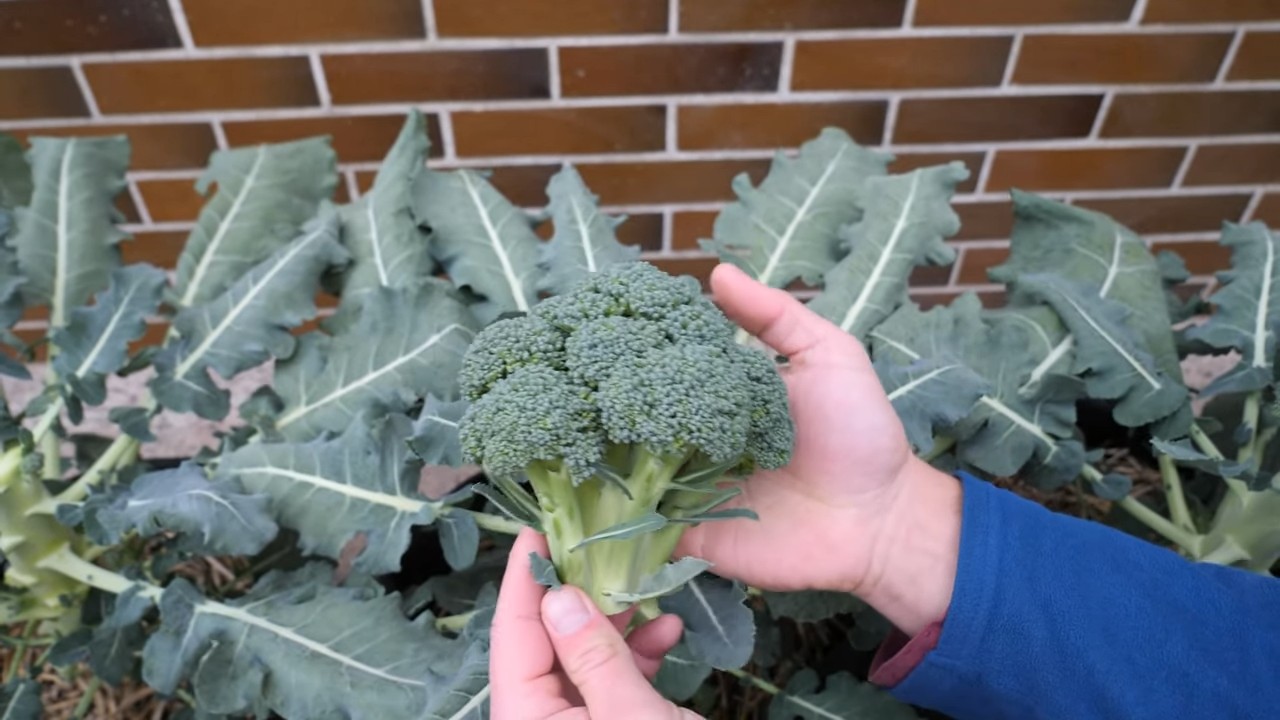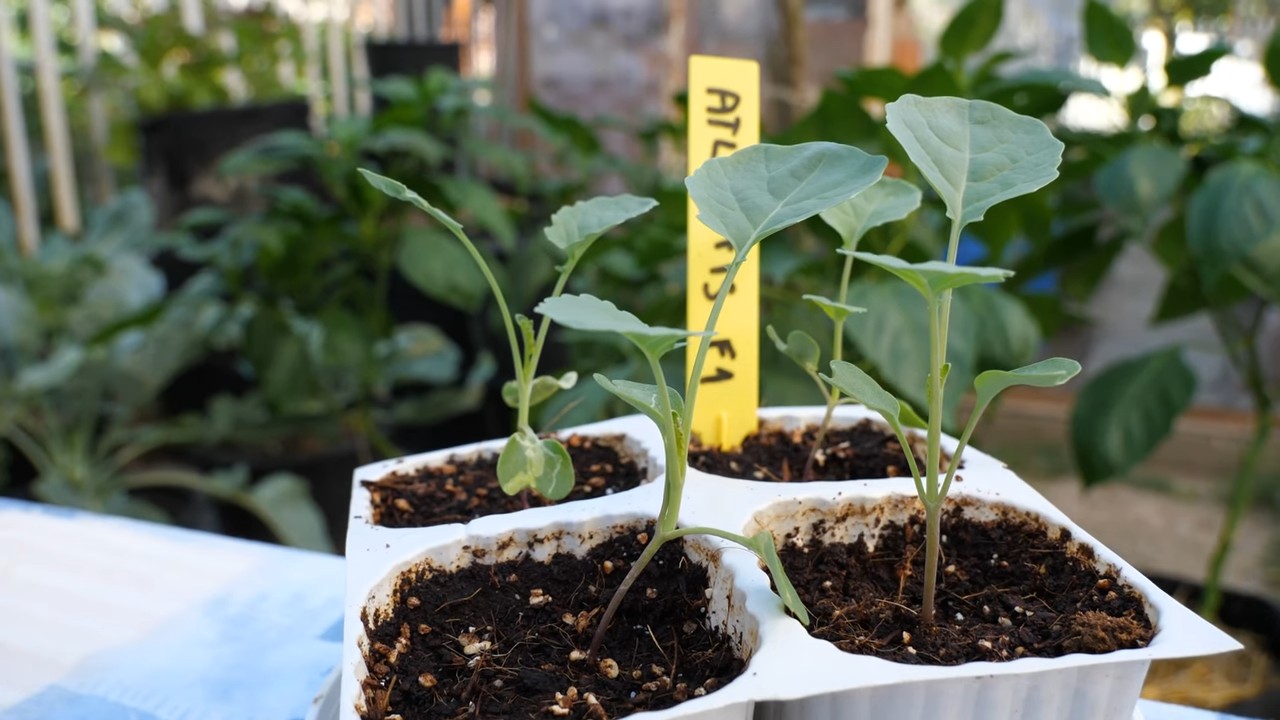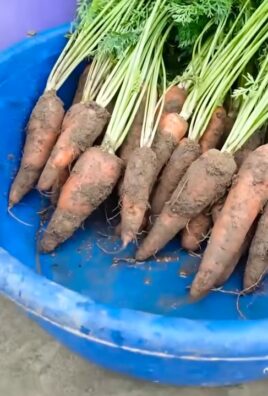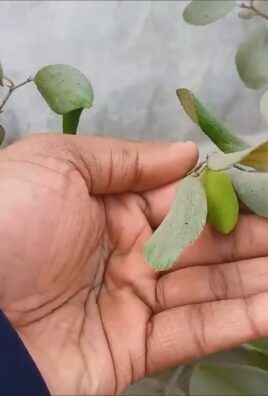Growing Broccoli Calabrese Home doesn’t have to be a daunting task! Imagine harvesting your own vibrant, green broccoli heads right from your backyard, ready to be steamed, roasted, or added to your favorite dishes. It’s a rewarding experience that connects you to nature and provides fresh, healthy food for your family. But let’s be honest, sometimes the path to a bountiful broccoli harvest can feel a little… tricky.
Broccoli, a member of the Brassica family, has a rich history dating back to the Roman Empire, where it was highly valued for its nutritional benefits. Today, it remains a staple in diets worldwide. However, successfully growing Broccoli Calabrese Home requires understanding its specific needs and overcoming common challenges like pests, diseases, and nutrient deficiencies.
That’s where this DIY guide comes in! I’m here to share my tried-and-true tips and tricks to help you cultivate thriving Broccoli Calabrese plants, even if you’re a beginner gardener. We’ll delve into everything from seed starting and soil preparation to pest control and harvesting, ensuring you have all the knowledge you need to enjoy a delicious and abundant broccoli harvest. So, grab your gardening gloves, and let’s get started!

Growing Broccoli Calabrese at Home: A DIY Guide
Okay, so you want to grow your own Broccoli Calabrese? Awesome! It’s totally doable, and honestly, there’s nothing quite like the taste of homegrown broccoli. I’ve been doing this for a few years now, and I’m excited to share my tips and tricks with you. Let’s get started!
Choosing the Right Time and Place
Timing is everything when it comes to broccoli. You want to avoid the hottest part of summer, as high temperatures can cause the heads to bolt (go to seed) and become bitter.
* Best Time to Plant: For a spring harvest, start seeds indoors 6-8 weeks before the last expected frost. For a fall harvest, direct sow seeds in mid-summer, about 85-100 days before the first expected frost. I usually aim for late June/early July for a fall crop.
* Sunlight: Broccoli needs at least 6 hours of sunlight per day. More is even better!
* Soil: Well-drained, fertile soil is key. Broccoli is a heavy feeder, so you’ll want to amend your soil with plenty of compost or well-rotted manure. A slightly acidic to neutral pH (6.0-7.0) is ideal.
Starting Seeds Indoors (for Spring Harvest)
If you’re aiming for a spring harvest, starting your seeds indoors is the way to go. This gives them a head start and protects them from late frosts.
1. Gather Your Supplies: You’ll need seed starting trays or small pots, seed starting mix, Broccoli Calabrese seeds, a spray bottle, and a heat mat (optional, but helpful).
2. Sow the Seeds: Fill your seed starting trays or pots with seed starting mix. Moisten the mix with the spray bottle – you want it damp, not soggy. Sow 2-3 seeds per cell or pot, about ¼ inch deep.
3. Provide Warmth and Light: Place the trays or pots on a heat mat (if using) and cover them with a humidity dome or plastic wrap to retain moisture. Keep them in a warm location (around 70-75°F). Once the seeds germinate (usually within 5-10 days), remove the humidity dome and place the seedlings under grow lights or in a sunny window.
4. Thin the Seedlings: Once the seedlings have their first true leaves (the second set of leaves), thin them to one seedling per cell or pot. Choose the strongest, healthiest-looking seedling and snip off the others at the soil line. Don’t pull them out, as this can disturb the roots of the remaining seedling.
5. Harden Off the Seedlings: About a week before you plan to transplant the seedlings outdoors, you’ll need to harden them off. This means gradually exposing them to outdoor conditions to acclimate them to the sun, wind, and temperature changes. Start by placing them outside for an hour or two each day, gradually increasing the time over the course of a week.
Direct Sowing Seeds (for Fall Harvest)
For a fall harvest, direct sowing is a great option, especially if you live in an area with mild summers.
1. Prepare the Soil: Choose a sunny spot in your garden and prepare the soil by removing any weeds, rocks, or debris. Amend the soil with plenty of compost or well-rotted manure. Rake the soil smooth.
2. Sow the Seeds: Sow the seeds about ½ inch deep and 18-24 inches apart. Water gently but thoroughly.
3. Keep the Soil Moist: Keep the soil consistently moist until the seeds germinate. You may need to water daily, especially during hot weather.
4. Thin the Seedlings: Once the seedlings have their first true leaves, thin them to one seedling per 18-24 inches.
Transplanting Seedlings Outdoors
Whether you started your seeds indoors or direct sowed them, you’ll eventually need to transplant your broccoli seedlings to their final location in the garden.
1. Choose a Cloudy Day: Transplanting on a cloudy day will help prevent the seedlings from getting stressed by the sun.
2. Prepare the Planting Holes: Dig holes that are slightly larger than the root balls of the seedlings, spacing them 18-24 inches apart.
3. Remove the Seedlings from Their Containers: Gently remove the seedlings from their containers, being careful not to damage the roots. If the seedlings are root-bound (the roots are tightly circling the bottom of the container), gently loosen the roots before planting.
4. Plant the Seedlings: Place the seedlings in the planting holes and backfill with soil. Gently firm the soil around the base of the plants.
5. Water Thoroughly: Water the seedlings thoroughly after planting.
6. Mulch: Apply a layer of mulch around the plants to help retain moisture, suppress weeds, and regulate soil temperature. I like to use straw or shredded leaves.
Caring for Your Broccoli Plants
Once your broccoli plants are in the ground, it’s important to provide them with the care they need to thrive.
* Watering: Broccoli needs consistent moisture, especially during hot weather. Water deeply whenever the top inch of soil feels dry. Avoid overhead watering, as this can promote fungal diseases. Drip irrigation or soaker hoses are ideal.
* Fertilizing: Broccoli is a heavy feeder, so you’ll need to fertilize it regularly. Apply a balanced fertilizer (such as 10-10-10) every 2-3 weeks. You can also side-dress with compost or well-rotted manure.
* Weeding: Keep the area around your broccoli plants free of weeds. Weeds compete with the broccoli for nutrients and water.
* Pest Control: Broccoli is susceptible to a variety of pests, including cabbage worms, aphids, and flea beetles. Inspect your plants regularly for signs of pests and take action as needed. I prefer to use organic pest control methods, such as insecticidal soap, neem oil, or Bacillus thuringiensis (Bt). You can also cover your plants with row covers to prevent pests from reaching them.
* Supporting the Plants: As the broccoli heads get larger, the plants may need support to prevent them from falling over. You can use stakes or tomato cages to provide support.
Dealing with Common Broccoli Problems
Even with the best care, you may encounter some problems when growing broccoli. Here are a few common issues and how to deal with them:
* Bolting: Bolting occurs when broccoli plants are exposed to high temperatures or stress. The heads will start to loosen and the plant will begin to flower. To prevent bolting, plant your broccoli at the right time of year and provide it with consistent moisture and shade during hot weather.
* Buttoning: Buttoning is when the broccoli heads form small, premature heads instead of one large head. This can be caused by nutrient deficiencies, drought stress, or transplant shock. To prevent buttoning, make sure your soil is fertile, water your plants regularly, and harden off your seedlings properly before transplanting.
* Clubroot: Clubroot is a soilborne disease that causes the roots of broccoli plants to swell and become distorted. This can stunt the growth of the plants and reduce yields. To prevent clubroot, plant your broccoli in well-drained soil and avoid planting it in the same location year after year. You can also amend the soil with lime to raise the pH.
* Cabbage Worms: Cabbage worms are green caterpillars that feed on the leaves of broccoli plants. They can quickly defoliate your plants if left unchecked. To control cabbage worms, handpick them off the plants or spray with Bacillus thuringiensis (Bt).
* Aphids: Aphids are small, sap-sucking insects that can weaken broccoli plants. They often cluster on the undersides of leaves. To control aphids, spray with insecticidal soap or neem oil.
* Flea Beetles: Flea beetles are small, jumping insects that chew small holes in the leaves of broccoli plants. They are most active in warm, dry weather. To control flea beetles, cover your plants with row covers or spray with insecticidal soap or neem oil.
Harvesting Your Broccoli
The moment you’ve been waiting for! Harvesting your own Broccoli Calabrese is incredibly rewarding.
1. When to Harvest: Harvest your broccoli when the heads are firm, tight, and dark green. The individual florets should be tightly closed. If the florets start to open and turn yellow, it’s time to harvest immediately.
2. How to Harvest: Use a sharp knife to cut the main head of broccoli from the plant, leaving about 4-6 inches of stem.
3. Encourage Side Shoots: After harvesting the main head, the plant will often produce side shoots. These smaller heads can be harvested later in the season.
4. Enjoy Your Harvest: Enjoy your fresh, homegrown broccoli! It can be eaten raw, steamed, roasted, or used in

Conclusion
So, there you have it! Growing Broccoli Calabrese at home isn’t just a gardening project; it’s an investment in fresh, flavorful, and nutritious meals. We’ve walked through the process, from selecting the right seeds to harvesting your bountiful crop. But why should you take the plunge and dedicate your time and effort to this endeavor?
The answer is simple: superior quality and unparalleled freshness. Store-bought broccoli, while convenient, often pales in comparison to the vibrant green heads you can cultivate in your own backyard. Imagine the satisfaction of serving a dish featuring broccoli you nurtured from a tiny seed, knowing exactly where it came from and what went into its growth. The taste difference alone is a compelling reason to try this DIY trick. Homegrown Broccoli Calabrese boasts a sweeter, more delicate flavor that you simply won’t find in commercially grown varieties.
Beyond the taste, growing your own broccoli offers a significant health advantage. You control the growing environment, ensuring that your plants are free from harmful pesticides and herbicides. This means you’re providing your family with a healthier, more wholesome vegetable. Plus, the act of gardening itself is incredibly therapeutic, offering a chance to connect with nature and reduce stress.
But the benefits don’t stop there. Growing Broccoli Calabrese at home is also a sustainable choice. By reducing your reliance on commercially grown produce, you’re minimizing your carbon footprint and supporting a more environmentally friendly food system.
Now, let’s talk about variations and suggestions to personalize your broccoli-growing experience. Consider companion planting to enhance growth and deter pests. Marigolds, for example, are known to repel many common broccoli pests. You can also experiment with different varieties of Broccoli Calabrese, such as ‘De Cicco’ for smaller, earlier heads or ‘Waltham 29’ for larger, more robust plants.
For those with limited space, container gardening is an excellent option. Choose a large pot with good drainage and follow the same planting and care instructions as you would for in-ground gardening. Just be sure to provide adequate sunlight and water.
And don’t forget about the broccoli leaves! They’re often discarded, but they’re actually quite nutritious and delicious. Sauté them with garlic and olive oil for a simple and flavorful side dish.
Growing Broccoli Calabrese at home is more than just a gardening project; it’s a journey of discovery, a celebration of fresh, healthy food, and a step towards a more sustainable lifestyle. So, grab your seeds, prepare your soil, and get ready to experience the joy of harvesting your own homegrown broccoli.
We’re confident that you’ll find this DIY trick rewarding and enjoyable. But don’t just take our word for it. Try it for yourself and see the difference firsthand. And most importantly, share your experience with us! We’d love to hear your tips, tricks, and successes. Post photos of your homegrown broccoli on social media using #HomegrownBroccoliCalabrese and let’s inspire others to join the movement. Happy gardening!
Frequently Asked Questions (FAQ)
What is the best time of year to plant Broccoli Calabrese?
The timing depends on your climate. Broccoli Calabrese is a cool-season crop, so it thrives in temperatures between 60°F and 70°F (15°C and 21°C). In regions with mild winters, you can plant in the fall for a winter harvest. In colder climates, start seeds indoors 6-8 weeks before the last expected frost and transplant them outdoors in the spring. You can also plant a second crop in late summer for a fall harvest. The key is to avoid planting during the hottest months of the year, as high temperatures can cause the broccoli to bolt (go to seed).
How much sunlight does Broccoli Calabrese need?
Broccoli Calabrese requires at least 6 hours of direct sunlight per day. More sunlight is even better, as it will promote strong growth and larger heads. If you’re growing broccoli in containers, make sure to place them in a sunny location. If you live in a particularly hot climate, some afternoon shade can be beneficial to prevent the plants from overheating.
What kind of soil is best for growing Broccoli Calabrese?
Broccoli Calabrese prefers well-drained, fertile soil with a pH between 6.0 and 7.0. Amend your soil with compost or other organic matter to improve drainage and fertility. Broccoli is a heavy feeder, so it’s important to provide it with plenty of nutrients. You can also add a slow-release fertilizer at planting time.
How often should I water my Broccoli Calabrese plants?
Water your Broccoli Calabrese plants regularly, especially during dry periods. Aim to keep the soil consistently moist but not waterlogged. Water deeply at the base of the plants, avoiding wetting the foliage, which can increase the risk of disease. Mulching around the plants can help to retain moisture and suppress weeds.
What are some common pests and diseases that affect Broccoli Calabrese?
Common pests that affect Broccoli Calabrese include cabbage worms, aphids, flea beetles, and cabbage root maggots. Diseases include clubroot, black rot, and downy mildew. To prevent pests and diseases, practice good garden hygiene, such as removing plant debris and rotating crops. You can also use organic pest control methods, such as insecticidal soap or Bacillus thuringiensis (Bt), to control pests. For diseases, choose disease-resistant varieties and ensure good air circulation around the plants.
How do I know when my Broccoli Calabrese is ready to harvest?
Broccoli Calabrese is ready to harvest when the central head is firm and tight, and the florets are still green and unopened. The size of the head will vary depending on the variety, but generally, it should be about 6-8 inches in diameter. Use a sharp knife to cut the head from the plant, leaving a few inches of stem. After harvesting the central head, the plant may produce smaller side shoots, which can also be harvested.
Can I grow Broccoli Calabrese in containers?
Yes, you can grow Broccoli Calabrese in containers. Choose a large pot (at least 12 inches in diameter) with good drainage. Use a high-quality potting mix and follow the same planting and care instructions as you would for in-ground gardening. Be sure to provide adequate sunlight and water. Container-grown broccoli may require more frequent watering and fertilization than plants grown in the ground.
What are some companion plants for Broccoli Calabrese?
Companion planting can help to enhance growth and deter pests. Good companion plants for Broccoli Calabrese include:
* Marigolds: Repel many common broccoli pests.
* Nasturtiums: Attract aphids away from broccoli.
* Dill: Attract beneficial insects that prey on broccoli pests.
* Onions and garlic: Repel cabbage moths and other pests.
* Rosemary and thyme: Repel cabbage moths.
Can I eat the broccoli leaves?
Yes, the broccoli leaves are edible and nutritious. They can be sautéed, steamed, or added to soups and stews. They have a slightly bitter flavor, similar to kale or collard greens.
How do I store harvested Broccoli Calabrese?
Store harvested Broccoli Calabrese in the refrigerator. Wrap the head in a damp paper towel and place it in a plastic bag. It will keep for about 3-5 days. You can also freeze broccoli for longer storage. Blanch the florets in boiling water for 3 minutes, then plunge them into ice water to stop the cooking process. Drain well and freeze in a single layer on a baking sheet. Once frozen, transfer the florets to a freezer bag or container.




Leave a Comment